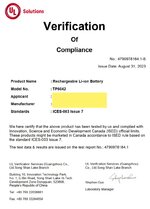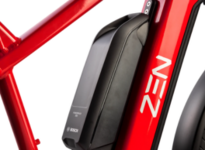Zen Support
New Member
- Region
- Canada
- City
- Dartmouth
Hello, e-bike enthusiasts!
Today, let's dive into Zen Electric Bikes' impressive battery technology. Their e-bikes boast a robust 52V, 20Ah, 1000Wh battery. What makes this so special?
Zen is committed to pushing the boundaries of e-bike performance with their in-house R&D. Their team, composed of seasoned engineers, mechanics, and battery scientists, brings over 20 years of industry experience. This expertise is crucial in developing cutting-edge battery solutions specifically for the e-bike industry.
Key Aspects of Zen's Battery Technology:
Battery Specifications: Zen's 1000Wh battery offers a higher capacity compared to many standard e-bike batteries. This means potentially longer ranges and more consistent power, which is particularly beneficial for extended rides or demanding usage.
In-House R&D Efforts: Zen's focus on internal research and development, backed by a team with extensive experience, likely leads to optimized battery solutions. This expertise can result in more efficient energy use, longer battery life, and better integration with the bike's overall system.
Innovative Solutions: While specific innovations by Zen are not detailed, they might include advanced battery management, improved thermal regulation, or new cell chemistries, contributing to longer battery life, enhanced safety, and improved performance.
Industry Impact: Zen’s approach to high-capacity batteries could influence the e-bike industry's future direction, setting new standards for battery performance and design.
User Experiences: Users of e-bikes with high-capacity batteries like Zen's might experience longer ranges and reduced charging frequency, especially in power-intensive situations such as hill climbing or carrying loads.
Today, let's dive into Zen Electric Bikes' impressive battery technology. Their e-bikes boast a robust 52V, 20Ah, 1000Wh battery. What makes this so special?
Zen is committed to pushing the boundaries of e-bike performance with their in-house R&D. Their team, composed of seasoned engineers, mechanics, and battery scientists, brings over 20 years of industry experience. This expertise is crucial in developing cutting-edge battery solutions specifically for the e-bike industry.
Key Aspects of Zen's Battery Technology:
Battery Specifications: Zen's 1000Wh battery offers a higher capacity compared to many standard e-bike batteries. This means potentially longer ranges and more consistent power, which is particularly beneficial for extended rides or demanding usage.
In-House R&D Efforts: Zen's focus on internal research and development, backed by a team with extensive experience, likely leads to optimized battery solutions. This expertise can result in more efficient energy use, longer battery life, and better integration with the bike's overall system.
Innovative Solutions: While specific innovations by Zen are not detailed, they might include advanced battery management, improved thermal regulation, or new cell chemistries, contributing to longer battery life, enhanced safety, and improved performance.
Industry Impact: Zen’s approach to high-capacity batteries could influence the e-bike industry's future direction, setting new standards for battery performance and design.
User Experiences: Users of e-bikes with high-capacity batteries like Zen's might experience longer ranges and reduced charging frequency, especially in power-intensive situations such as hill climbing or carrying loads.

